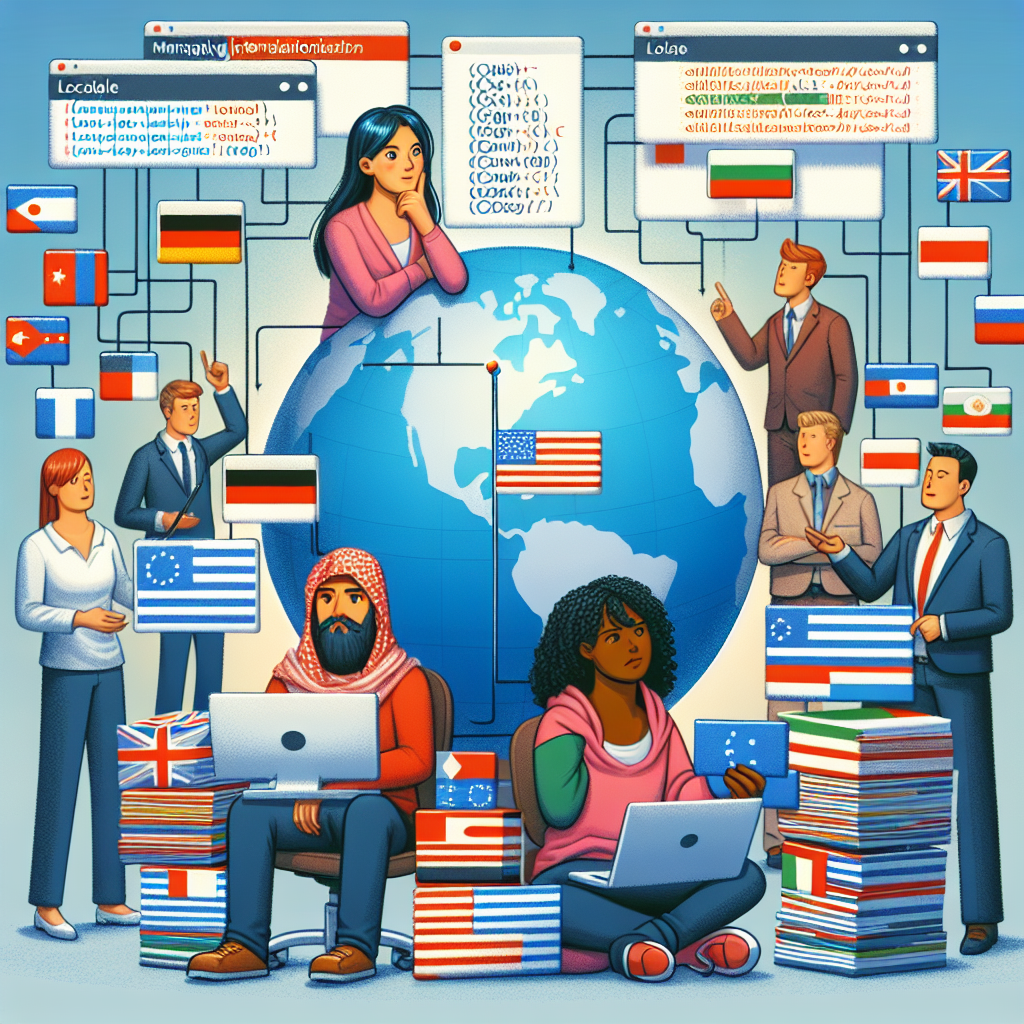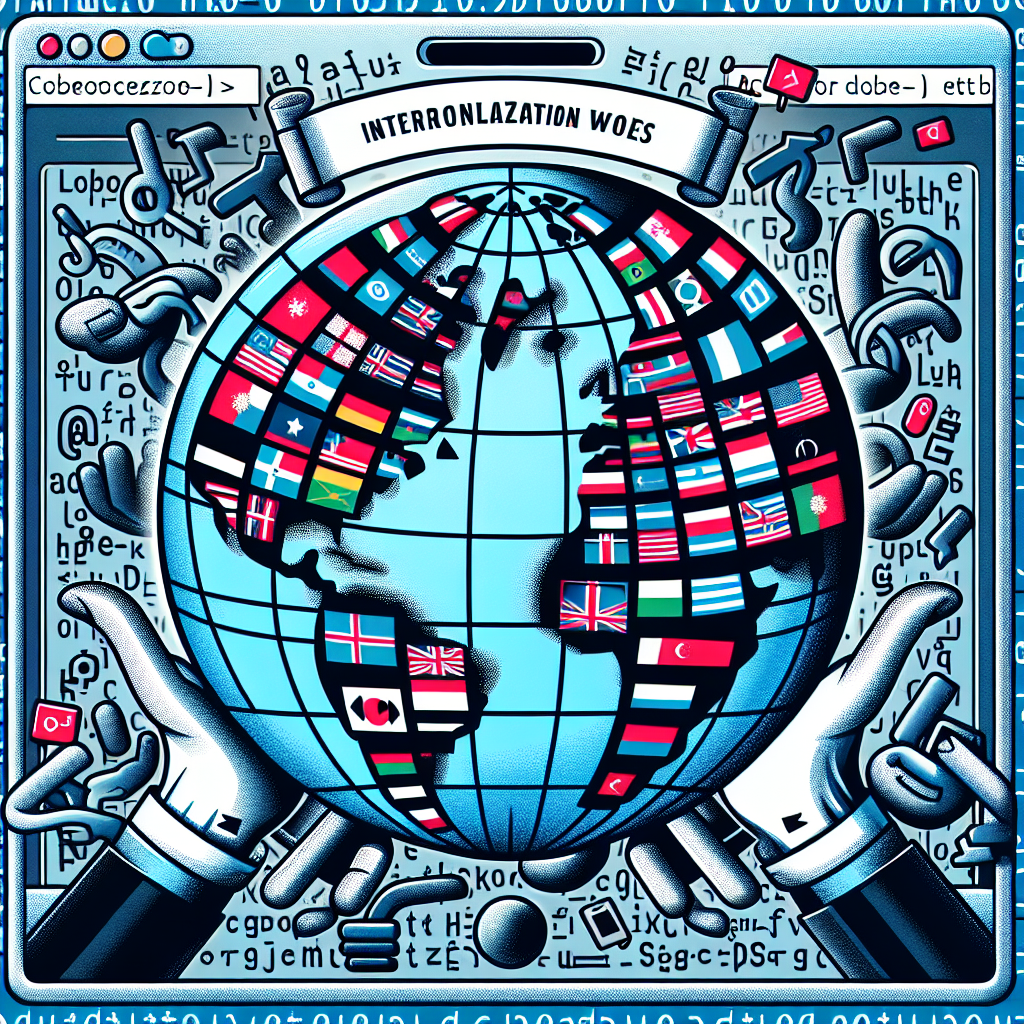Introduction
Internationalization, often abbreviated as i18n, is the process of designing and developing software applications to ensure they can be adapted to various languages and regions without requiring engineering changes. One of the critical challenges in internationalization is handling locales and encodings. Locales encompass the cultural and linguistic preferences of users, including aspects such as date formats, number formats, and currency symbols. Encodings, on the other hand, refer to the representation of text in different character sets, which is essential for supporting multiple languages. Mismanagement of locales and encodings can lead to a range of issues, from garbled text and incorrect data presentation to software crashes. Therefore, understanding and effectively managing these elements is crucial for creating robust, user-friendly applications that cater to a global audience. This introduction delves into the common pitfalls and best practices associated with handling locales and encodings in the context of internationalization.
Challenges in Managing Locales for Global Applications
In the realm of global applications, managing locales and encodings presents a myriad of challenges that developers must navigate to ensure seamless user experiences across diverse regions. As businesses expand their digital presence internationally, the need to cater to various languages, cultural norms, and regional preferences becomes paramount. This necessity introduces complexities that, if not addressed properly, can lead to significant user dissatisfaction and operational inefficiencies.
One of the primary challenges in managing locales is the accurate representation of language and regional formats. Different languages have unique characters, scripts, and grammatical structures that must be correctly displayed and processed. For instance, while English uses the Latin alphabet, languages like Chinese, Arabic, and Russian employ entirely different scripts. This diversity necessitates robust support for Unicode, a universal character encoding standard that encompasses virtually all writing systems. However, merely adopting Unicode is not a panacea; developers must also ensure that their applications can handle text input, storage, and display without corruption or loss of data.
Transitioning from character encoding to locale-specific formatting, another significant hurdle is the proper handling of dates, times, numbers, and currencies. Each locale has its conventions for these elements, and failure to adhere to them can lead to confusion and errors. For example, the date format “MM/DD/YYYY” is common in the United States, whereas many European countries use “DD/MM/YYYY.” Similarly, numerical separators vary, with some regions using commas and others using periods to denote thousands and decimal places. Currency symbols and placement also differ, requiring applications to dynamically adjust based on the user’s locale. Implementing these adjustments demands meticulous attention to detail and comprehensive testing to ensure accuracy.
Moreover, cultural nuances extend beyond mere formatting. User interface design must consider cultural preferences and sensitivities to avoid alienating users. Colors, icons, and imagery that are acceptable in one culture may be inappropriate or offensive in another. Therefore, localization efforts must go beyond translation to encompass cultural adaptation, ensuring that the application resonates with users on a deeper level. This often involves collaboration with native speakers and cultural experts who can provide insights into local customs and expectations.
In addition to these technical and cultural challenges, developers must also contend with the performance implications of supporting multiple locales and encodings. Loading and processing locale-specific resources can increase the complexity and size of the application, potentially impacting its speed and responsiveness. Efficient resource management strategies, such as lazy loading and caching, are essential to mitigate these performance issues. Furthermore, automated testing frameworks must be employed to validate the application’s behavior across different locales, ensuring that changes in one locale do not inadvertently affect others.
Security considerations also play a crucial role in managing locales for global applications. Input validation and sanitization are critical to prevent injection attacks that exploit locale-specific vulnerabilities. For instance, certain characters or scripts may be used maliciously to bypass security checks or execute harmful code. Therefore, developers must implement rigorous security measures to safeguard the application and its users.
In conclusion, handling locales and encodings for global applications is a multifaceted challenge that requires a holistic approach encompassing technical precision, cultural sensitivity, performance optimization, and security vigilance. By addressing these aspects comprehensively, developers can create applications that not only function correctly across different regions but also provide a user experience that feels native and intuitive to users worldwide.
Best Practices for Handling Character Encodings in International Software

In the realm of international software development, handling character encodings effectively is paramount to ensuring a seamless user experience across diverse linguistic and cultural landscapes. As software applications expand their reach globally, developers must navigate the complexities of different character sets, encodings, and locales. This task, while challenging, is essential for maintaining the integrity and usability of software in various regions.
To begin with, understanding the importance of character encodings is crucial. Character encoding is a system that pairs each character from a given repertoire with something else, such as a number or a sequence of bytes, to facilitate the storage and transmission of text. The most widely used encoding standard today is Unicode, which aims to cover all the characters for all the writing systems of the world. Unicode’s most common encoding forms are UTF-8, UTF-16, and UTF-32, with UTF-8 being the most prevalent due to its compatibility with ASCII and efficiency in terms of storage.
When developing international software, it is best practice to adopt Unicode from the outset. This approach simplifies the handling of multiple languages and scripts, as Unicode provides a unique code point for every character, regardless of the platform, program, or language. By using Unicode, developers can avoid the pitfalls associated with legacy encodings, which often lead to data corruption and display issues when text is transferred between systems that use different encodings.
Moreover, it is essential to ensure that all components of the software stack, including databases, APIs, and user interfaces, support and correctly implement Unicode. For instance, databases should be configured to use Unicode-compatible character sets, such as UTF-8, to store text data. Similarly, APIs should be designed to accept and return text in a consistent encoding format, preferably UTF-8, to prevent encoding mismatches and data loss.
In addition to adopting Unicode, developers must also be mindful of locale settings. A locale is a set of parameters that defines the user’s language, country, and any special variant preferences. These parameters influence various aspects of software behavior, including date and time formatting, number formatting, and string collation. Properly handling locales ensures that the software behaves in a manner consistent with the user’s cultural expectations.
To manage locales effectively, developers should leverage libraries and frameworks that provide robust internationalization (i18n) support. These tools often include functions for locale-aware formatting, sorting, and text processing, which can significantly reduce the complexity of handling different locales. Furthermore, it is advisable to externalize locale-specific resources, such as text strings and formatting patterns, into separate files. This practice facilitates easier updates and translations, as changes can be made without modifying the core application code.
Testing is another critical aspect of handling character encodings and locales in international software. Comprehensive testing should cover a wide range of languages and scripts, including those with complex characters and right-to-left writing systems. Automated tests can help identify encoding issues and locale-related bugs early in the development process, allowing for timely corrections.
In conclusion, handling character encodings and locales in international software requires a thorough understanding of Unicode, careful configuration of software components, and the use of appropriate libraries and frameworks. By adopting best practices such as using Unicode, managing locales effectively, and conducting rigorous testing, developers can create software that meets the needs of a global audience, ensuring a consistent and reliable user experience across different regions and languages.
Common Pitfalls in Internationalization: Locales and Encodings
Internationalization, often abbreviated as i18n, is a critical aspect of software development in today’s globalized world. It involves designing software applications in such a way that they can be easily adapted to various languages and regions without requiring engineering changes. However, this process is fraught with challenges, particularly when it comes to handling locales and encodings. These two elements are fundamental to ensuring that software behaves correctly and displays information accurately across different cultural contexts. Despite their importance, they are often sources of common pitfalls that can derail internationalization efforts.
One of the primary issues developers encounter is the improper handling of locales. A locale is a set of parameters that defines the user’s language, country, and any special variant preferences. It influences various aspects of the software, including date and time formats, number formats, and text sorting. A common mistake is assuming that a single locale can serve multiple regions adequately. For instance, the English language has numerous variants, such as American English, British English, and Australian English, each with its own unique spelling, terminology, and date formats. Failing to account for these differences can lead to user confusion and a subpar user experience.
Moreover, developers often overlook the importance of locale-sensitive data processing. For example, sorting algorithms that work perfectly in one locale may produce incorrect results in another. This is because different locales have different rules for character collation. Ignoring these rules can result in lists that appear jumbled or out of order to users from different regions. Therefore, it is crucial to use locale-aware libraries and functions to handle such tasks.
Transitioning from locales to encodings, another significant challenge in internationalization is managing character encodings correctly. Character encoding is the process of converting characters into a format that can be easily stored and transmitted by computers. The most widely used encoding standard today is UTF-8, which can represent any character in the Unicode standard. However, legacy systems and applications may still use older encodings like ISO-8859-1 or Windows-1252. Mixing different encodings can lead to garbled text and data corruption, making it essential to standardize on a single encoding format wherever possible.
Furthermore, developers must be vigilant about encoding issues when dealing with user input and output. For instance, web forms that accept user input in multiple languages must ensure that the data is correctly encoded and decoded. Failure to do so can result in lost or corrupted data, which can be particularly problematic for applications that rely on accurate user information. Additionally, when displaying text, it is important to specify the correct character encoding in HTML headers to ensure that browsers render the text correctly.
In conclusion, while internationalization is indispensable for creating globally accessible software, it is fraught with challenges related to locales and encodings. Developers must be meticulous in handling these aspects to avoid common pitfalls that can compromise the user experience. By paying close attention to locale-specific data processing and standardizing on a robust character encoding like UTF-8, developers can create software that not only meets the needs of a diverse user base but also stands the test of time in an increasingly interconnected world.
Q&A
1. **Question:** What is a common issue when handling locales in internationalization?
**Answer:** A common issue is the incorrect formatting of dates, times, numbers, and currencies, which can lead to confusion and misinterpretation by users from different locales.
2. **Question:** Why is encoding important in internationalization?
**Answer:** Encoding is crucial because it ensures that text is correctly displayed and interpreted across different systems and platforms, preventing issues like garbled text or data corruption, especially with non-ASCII characters.
3. **Question:** How can developers mitigate problems with different character encodings?
**Answer:** Developers can mitigate these problems by consistently using a universal encoding standard like UTF-8, which supports a wide range of characters from various languages and is widely adopted across different systems and platforms.Internationalization Woes: Handling Locales and Encodings highlights the complexities and challenges associated with adapting software applications for global use. It underscores the importance of understanding and correctly implementing locale settings and character encodings to ensure proper functionality and user experience across different regions and languages. The conclusion emphasizes that meticulous planning, thorough testing, and a deep understanding of internationalization principles are crucial for overcoming these challenges and achieving seamless global software deployment.



